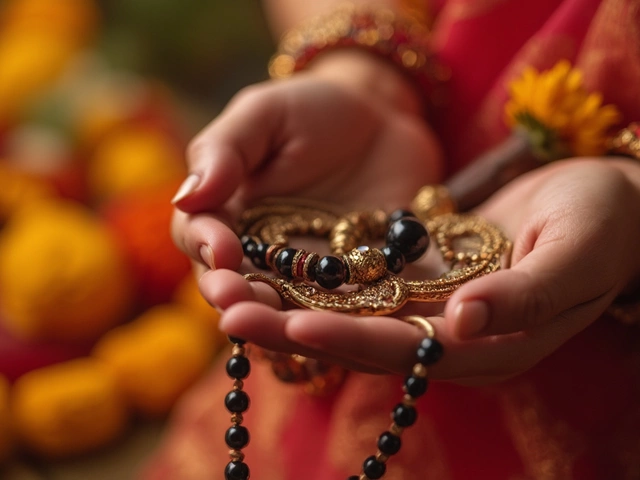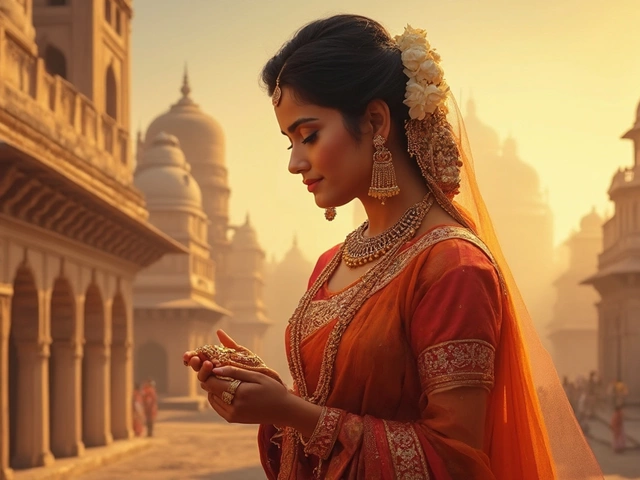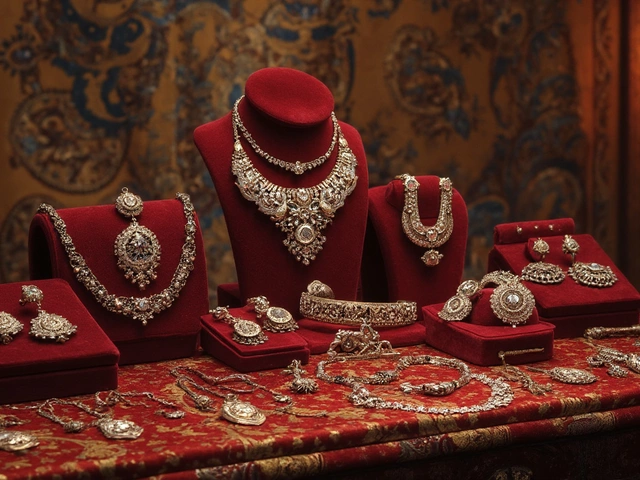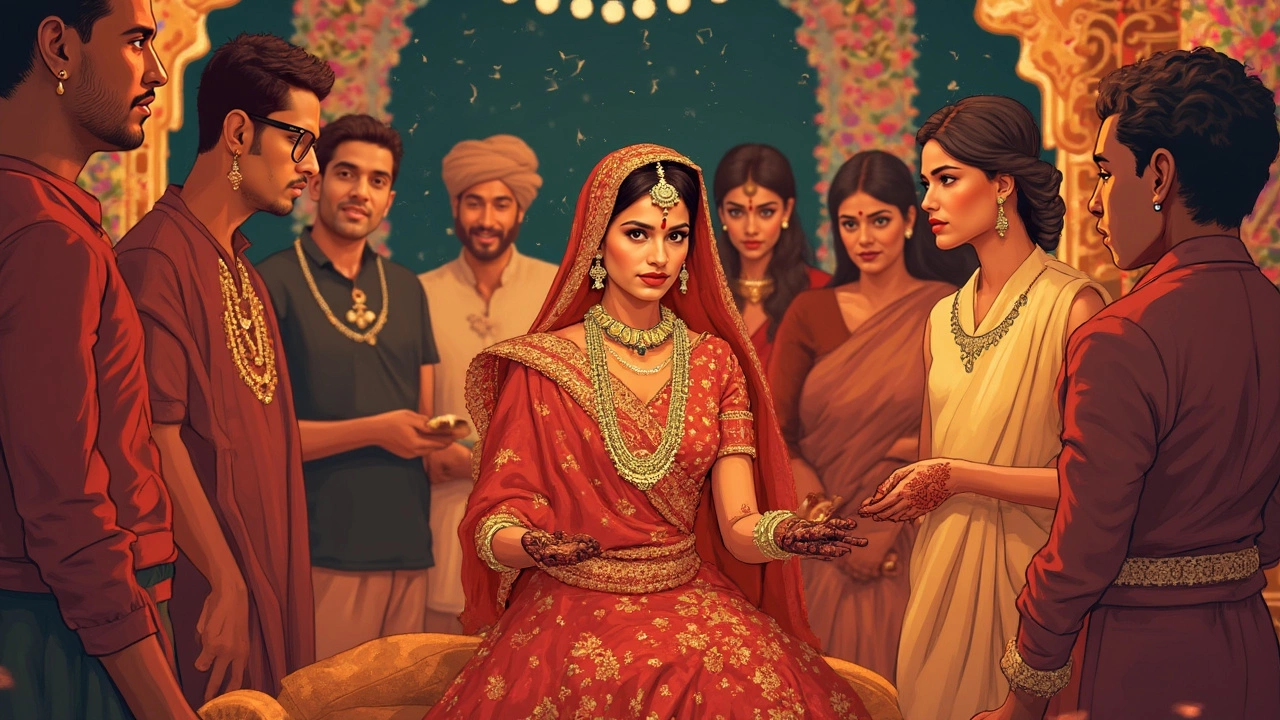
The world of jewelry is vast, but when it comes to cultural significance, few pieces hold as much meaning as the mangalsutra. This special necklace is more than just a style choice—it's a symbol of marriage in Indian culture. But what about its place in religious texts like the Bible? Well, the Bible doesn't mention mangalsutras directly, but that doesn't mean there's no room for discussion.
You've probably noticed that the Bible is packed with symbolism, guidance, and plenty of room for interpretation. Some Christians might wonder how a piece of jewelry like the mangalsutra aligns with or contrasts against their beliefs. It's not just about wearing it; it's about understanding its meaning and how it fits into your own spiritual context.
If you're someone who's intrigued by blending traditions—say, wearing a mangalsutra along with your Christian faith—you might be looking to explore the relationship between cultural practices and religious principles. You may even want to know how to explain its significance to others who might be curious or even skeptical.
- Understanding Mangalsutra
- Biblical References and Cultural Symbols
- Mangalsutra vs. Western Wedding Traditions
- Cultural Sensitivity and Religious Practices
- Design Variations with a Biblical Touch
- Practical Tips for Blending Traditions
Understanding Mangalsutra
At first glance, the mangalsutra might just seem like a pretty necklace, but for many, it’s so much more. This piece of jewelry is deeply rooted in Indian wedding traditions, serving as a visible sign of marital status for married women in Hindu culture. It’s a bit like wearing a wedding ring in Western cultures, but with its own unique significance.
The word 'mangalsutra' breaks down to 'mangal,' meaning holy or auspicious, and 'sutra,' meaning thread. That tells you a lot about its intended role: a sacred thread that blesses the couple’s journey together. Traditionally, the necklace is tied by the groom around the bride’s neck during the wedding ceremony. This act seals the union and is considered a powerful blessing in itself.
Design-wise, a classic mangalsutra usually features black beads on a chain, joined by a gold or diamond pendant. The black beads are believed to ward off the evil eye, safeguarding the couple’s happiness and prosperity. Nowadays, though, there are endless design variations, from simple chains to intricate gold or diamond-studded pieces, giving couples the freedom to match their unique taste and style.
History and Evolution
The mangalsutra has evolved over the years. While its origins date back to the ancient Dravidian culture, it gained popularity throughout India, taking on regional variations. In some communities, it’s a short chain; in others, it's a haul of gold. What’s remained consistent, however, is the deep respect and symbolism it carries in marriage.
Modern fashion trends have even seen it being adapted beyond traditional uses. Some innovations are more about reflecting personal style, ensuring that it resonates with both cultural roots and contemporary aesthetics.
Whether you're getting your first mangalsutra or looking for a design refresh, understanding its cultural value can enrich the whole experience. It isn’t just about wearing a necklace; it’s understanding and embracing a tradition that’s been part of a larger cultural narrative for centuries.
Biblical References and Cultural Symbols
The Bible, with its rich tapestry of stories and teachings, doesn't directly mention the mangalsutra, but it does talk a lot about symbols and promises. In biblical times, symbols like rings were used to signify important vows, so here's where the conversation about the mangalsutra gets interesting.
If we look at Genesis, we see examples of how symbols were used in marriage. Remember the story of Abraham's servant giving Rebekah bracelets and a nose ring as a sign of her betrothal to Isaac? Jewelry carried meaning, marking significant relationships and commitments.
Now, fast forward to today, and you see that the mangalsutra works in a similar way within its own cultural context. For many Indian couples, it symbolizes unity and commitment, much like a wedding band for Christians. While the materials and designs differ—like gold and black beads in a mangalsutra versus a simple gold band—the sentiment is remarkably similar.
Understanding Symbolism Across Cultures
In Christianity, especially in Western cultures, wedding rings have become almost universally accepted symbols of marriage. However, Christians from diverse backgrounds are starting to embrace the mangalsutra, seeing it as a meaningful tradition worthy of respect, even outside its Hindu origins.
Symbols in the Bible, whether it's a covenant marked with a rainbow or a wedding ring, serve a purpose: to remind people of promises and commitments. For cultural inclusivity, it's handy to think of how these symbols play out in personal faith.
Merging Traditions and Symbols
For a Christian with a connection to Indian traditions, incorporating a mangalsutra can be a way of honoring both faith and culture. It doesn't need to conflict with Christian beliefs but can be seen as a harmonious blend of two traditions. The key is understanding and respecting the roots of both symbols, marrying them in a way that aligns with personal values.
Mangalsutra vs. Western Wedding Traditions
When we talk about marriage symbols, the first thing that pops into many minds in Western cultures is probably the wedding ring. In India, however, the mangalsutra holds a similar place of honor. These two traditions serve the same purpose—a visual reminder of a couple's commitment—but they go about it differently.
The mangalsutra, rich in cultural meaning, is a necklace made typically of black beads believed to ward off evil, along with gold or other precious stones. It's meant to be worn daily, symbolizing the eternal bond between husband and wife. Married women often consider it an essential piece of jewelry, much like folks in the West cherish their wedding bands.
On the flip side, a Western wedding ring is generally a simple band, worn on the left hand's ring finger. This tradition stems from the ancient belief that the vein in that finger runs directly to the heart. Unlike the mangalsutra, Western rings aren’t decorated for protective reasons; it's more about style and precious metal content, like gold or platinum.
Contrasts and Commonalities
Sure, the materials and methods vary, but the heart of these traditions is the same: love and fidelity. The mangalsutra, much like wedding rings, has evolved over time to include various designs, from traditional to modern. Some even incorporate elements like diamond pendants, mirroring Western trends.
| Tradition | Symbol | Material |
|---|---|---|
| Mangalsutra | Necklace | Gold, black beads |
| Wedding Ring | Ring | Gold, platinum |
Both traditions hold great significance and are celebrated in their unique ways. Whether you're drawn to the symbolism of the Bible or the fashion-forward aspects, there's no denying the power of these iconic pieces. So, if you're planning a cross-cultural ceremony, it's all about finding the right balance that respects and celebrates both heritages.
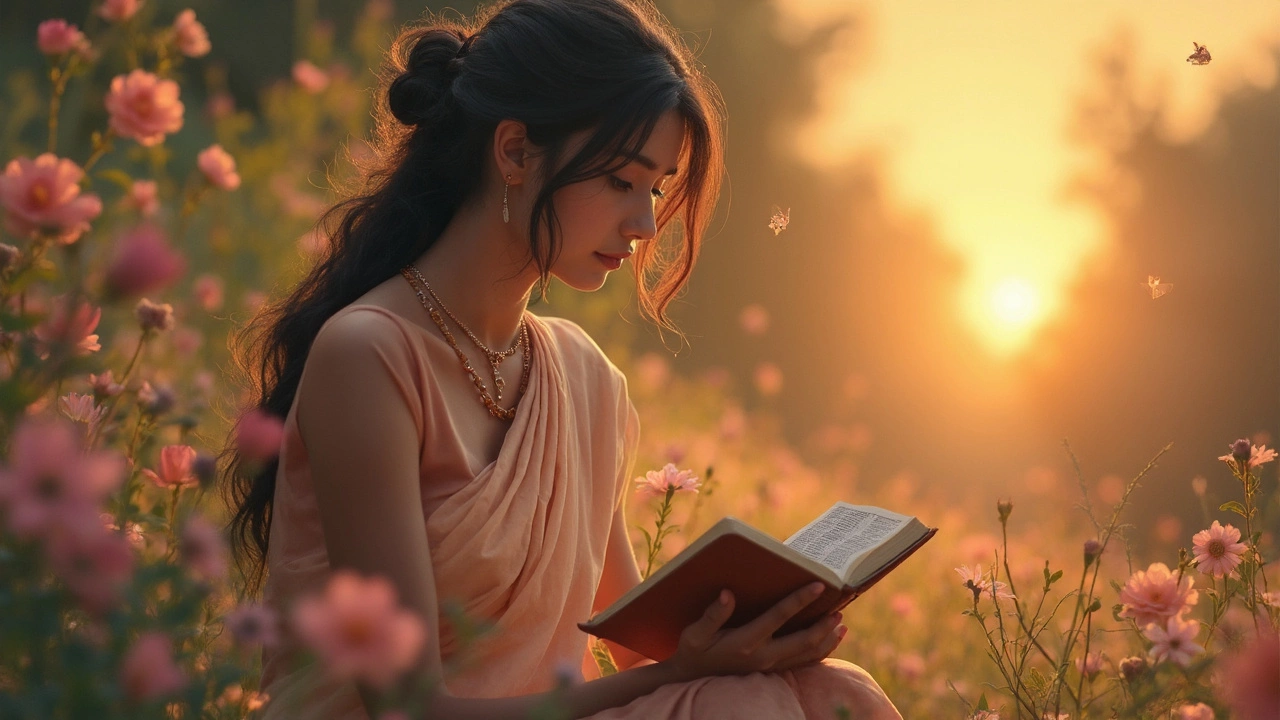
Cultural Sensitivity and Religious Practices
When it comes to blending cultural symbols like the mangalsutra with Christian practices, cultural sensitivity is key. This is about understanding and respecting the beliefs and traditions that people hold dear. Not everyone in a Christian community may be familiar with or understand the cultural significance of the mangalsutra, which means discussions and education are essential.
The Bible, while a rich resource for spiritual guidance, doesn't specifically address items like the mangalsutra. However, it speaks a lot about respect, love, and commitment, which are the very values the mangalsutra represents in Hindu marriage. Balancing these values with one's own religious practices can lead to a more inclusive and harmonious worldview.
So how can one respectfully integrate a mangalsutra into Christian life? Here are some practical tips:
- Start by educating yourself and others about the cultural significance and meanings behind the mangalsutra. This can include its origins, how it is worn, and what it signifies in a marriage.
- Communicate openly with family and community members about your intentions to wear a mangalsutra and what it personally means to you within your Christian faith.
- Consider interfaith discussions or community events where different traditions are celebrated. This can promote understanding and acceptance.
Another crucial aspect is acknowledging the fact that religion is deeply personal. What might be meaningful for one couple in representing their union might not resonate the same way with another. It all boils down to the individual's personal values and how they wish to express them.
Understanding cultural sensitivity in this context doesn't mean that anyone has to sacrifice their beliefs. Instead, it's about finding ways to honor both one's cultural heritage and religious faith in a manner that feels respectful and authentic. This harmony not only strengthens individual identity but also teaches a message of unity to the broader community.
Design Variations with a Biblical Touch
Alright, so you're interested in a mangalsutra that resonates with your religious symbolism. While the Bible doesn't spell out jewelry directives, there are ways to give this traditional ornament a touch that aligns with Christian values.
Many have found beauty in blending cultural and religious symbols. How about incorporating a small cross into the mangalsutra design? This can serve as an elegant nod to your faith while maintaining the original essence of the mangalsutra.
Symbolic Elements to Consider
- Colors and Beads: You can think about using colors like silver or gold, which often represent purity and divinity in Christian lore.
- Charms: Small symbols such as a dove or an ichthus can be added to the chain, bringing biblical imagery into your daily life.
- Engravings: Consider having a favorite Bible verse subtly engraved on the pendant—perhaps a passage on love or commitment.
Incorporating these elements not only personalizes your jewelry but also bridges your cultural and religious traditions in a beautiful way.
Finding Inspiration
If mixing traditions is up your alley, there are artisans specializing in customized designs, blending classic mangalsutra aspects with Christian motifs. It might also be worth looking into existing designs for other Christian-operated altaar pieces to see how they're incorporating their faith into their craft.
Mangalsutra vs. Biblical Jewelry
| Element | Mangalsutra | Biblical Jewelry |
|---|---|---|
| Symbolism | Union and marital bond | Faith and spiritual commitment |
| Common Images | Black beads, gold chain | Cross, ichthus fish |
| Materials | Gold, black beads | Silver, gemstones |
In the end, whether you choose to integrate subtle cultural traditions or keep it simple, the key lies in what speaks to you and your beliefs. It's your personal story that mingles both tradition and faith.
Practical Tips for Blending Traditions
Mixing cultural and religious traditions can feel like walking a tightrope, but it's definitely possible to do it meaningfully. If you've got a mangalsutra in your wedding list and you’re pondering how it sits with Christian practices, you're not alone. Many people navigate blending different parts of their life, and you can, too.
Start with Research
Understanding both cultural and biblical perspectives will give you a solid foundation. Knowing the significance behind the mangalsutra as a marital token, and reflecting on what marriage symbolizes in the Bible, can provide clarity and confidence.
Talk It Out
Dialogue is key. Discuss with your partner what each tradition means to both of you. It's important to feel comfortable with why you're choosing to include each element. Perhaps one of you cherishes the cultural aspect, while the other appreciates the spiritual symbolism. Find your common ground.
Create Your Own Rituals
Why not come up with something truly unique to you? You might choose to have a small personal ceremony after a traditional Christian wedding where the mangalsutra is exchanged as a personal promise or vow. Tailor your traditions to reflect what truly resonates with your union.
- Consider a dual ceremony to honor both cultural and Christian traditions.
- Invite a religious or community leader experienced in both traditions to guide the process.
- Share your story with friends and family to foster understanding and acceptance.
Balance in Jewelry Selection
If you're worried about tradition clashing with your personal style or beliefs, consider adapting the mangalsutra design. Choose motifs or colors that align with Biblical meanings, like using a cross or fish symbol incorporated into the design.
Remember, the most important thing is that your traditions make sense to you and your partner. After all, the blending of cultures and religions in marriage is all about celebrating a shared future while appreciating the diverse backgrounds that shape who you are.
